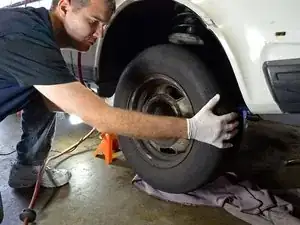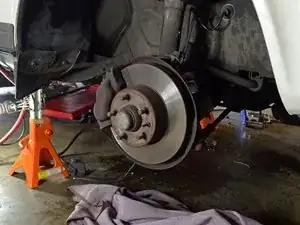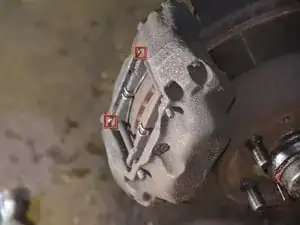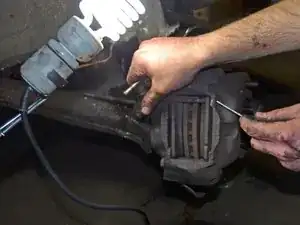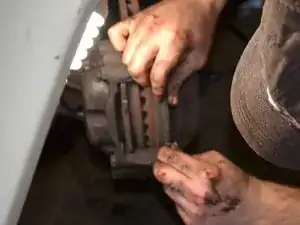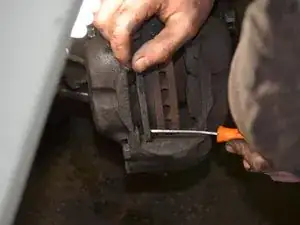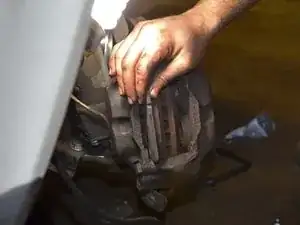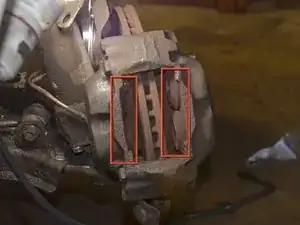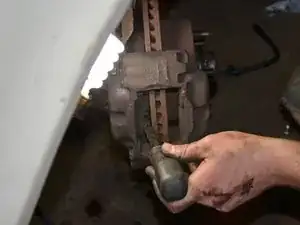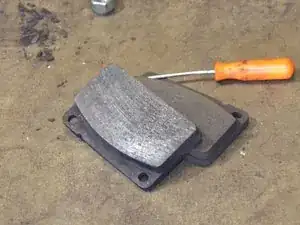Introduction
Brake pads are one of the most common causes of undesirable automotive noises. Often, annoying squeals and squeaks are dirty or worn brake pads. Stop making pedestrians cringe when you pull up to an intersection by installing some new brake pads.
Tools
-
-
Jack up the front of the car and place it on jack stands.
-
Use an impact wrench or lug wrench to remove the five 19 mm lug nuts from the front wheel.
-
Pull the front wheel off the wheel lugs and set it aside.
-
-
-
Insert the tip of a skinny screwdriver in the eyeholes of the clips and lift them off of the pins or pull with a pair of needle nose pliers.
-
-
-
Remove the two brake pad pins (P/N 1228810) by sliding them towards the car through their holes in the brake caliper. You may have to use a punch or screwdriver to get them moving and pliers to pull them through.
-
-
-
Using your hands or a screwdriver, lift the inner and outer brake pads out of the brake caliper.
-
-
-
Use a chisel, pry bar, or universal fence clamp to gently push the pistons away from the brake rotor and flush with the caliper.
-
To reassemble your device, follow these instructions in reverse order, starting at step 4.


